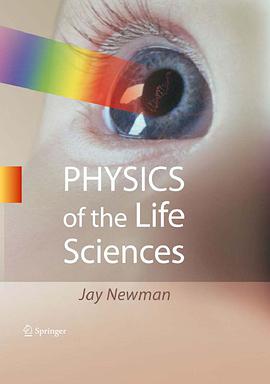Physics of the Life Sciences
豆瓣
Jay Newman
简介
This textbook has its origins in a course that I began developing at Union College
in the mid-1980s to teach physics to life science students in a way that would interest
them and show the connections of fundamental physics to modern biology and
medicine. From my own research experiences and interests in biophysics, I know
that almost all areas of modern life sciences integrally involve physics in both
experimental techniques and in basic understanding of process or function.
However, I and many colleagues with whom I have spoken have been unhappy over
the years with published attempts to direct a textbook to this audience. Most such
texts are watered down engineering physics books with occasional added sections
on related biology topics that are easy to skip over or assign students to read on
their own.
As I set out to write this textbook, I had certain definite goals in mind. I wanted
to write a book that was truly directed at life science students, one that integrated
modern biology, biophysics, and medical techniques into the presentation of the material.
Believing in the less is more credo, I chose to omit certain standard topics that are
usually included in texts for this audience, while expanding on topics that have more
relevance to the life and biomedical sciences. From my experience teaching to these
students, I also wanted a book that would be shorter and could be fully covered in a
two-semester course. Although students at Union College and comparable institutions
taking this introductory course have all had some calculus, only algebra and trigonometry
are used in the main body of the text. At this level, I believe that calculus adds little
to the understanding of the material and can detract from focusing on the basic
physical ideas. However, I have sprinkled in optional boxed calculations that do use
some calculus where I felt they truly added to the discussion (averaging less than one
box per chapter). These “sidebars” can be omitted without any loss of continuity.
The order of topics for this text follows a more or less traditional sequence. An
exception to this is the presentation of one-dimensional mechanics through forces
and energy before introducing vectors and generalizing to motion in more than one
dimension. This allows students to focus on the physics concepts of kinematics,
forces, and energy without being distracted by the ideas of vector analysis.
Beyond the order of topics, the presentation of material is unique in that, wherever
possible, themes from biology or medicine are used to present the physics material. The
material speaks to life science students. Rather than optional sections at the end of occasional
chapters, life science themes are plentiful and integral to the text. The role of these
topics here is more fundamental, as can be gleaned from a list of some examples.